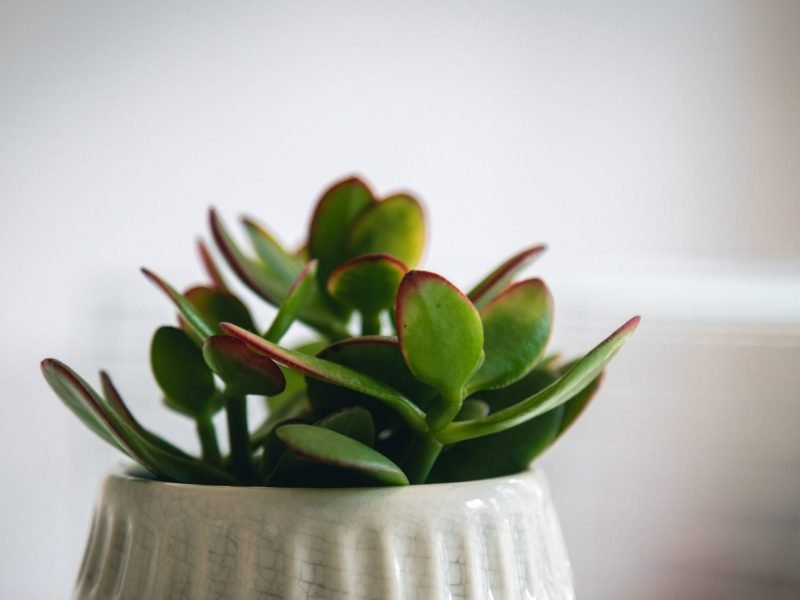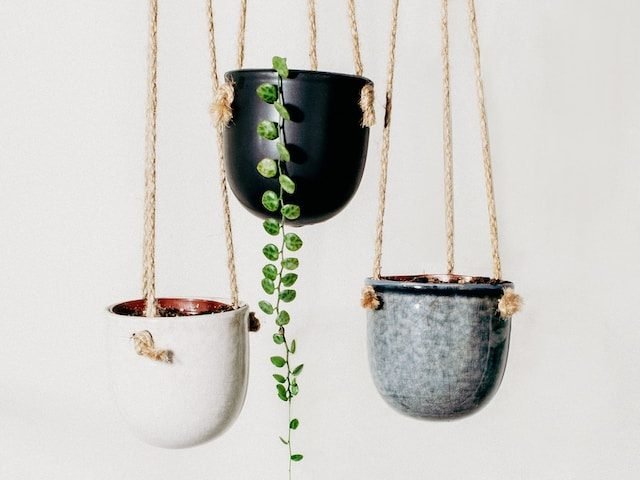
One of the most unique succulents out there, the Jade Plant is an incredible houseplant but they aren’t always the easiest to care for. This is why there are several factors that can cause your Jade Plant to start dying so it’s important to make the right diagnosis.
Below we will be going through each of the main causes of a dying Jade Plant as well as how to spot the issue, treat it and prevent it from causing any more harm to your plant in future.
You may be overwatering your Jade Plant
If the leaves on your Jade Plant have turned yellow and are quite limp then your plant might be dying due to overwatering. This can happen if you are either giving your plant too much water each time or you are simply watering it too frequently.
Jade Plants need their soil to dry out between waterings as they are a type of succulent and if this isn’t happening, their delicate roots can very quickly begin to rot.
How to know if your Jade Plant has been overwatered
It’s crucial that you confirm the issue before changing anything about how you water your plant. If you make the wrong changes it can lead to a whole range of issues which are even more problematic for a dying Jade Plant.
If the soil is clumpy and waterlogged replace it immediately with new fresh and dry potting mix. This will give the roots the best chance at survival and help to revive your dying plant. Carefully remove as much of the old potting mix as possible. One method to do this is to gently rinse the roots in the sink.
Now you’ve done everything you can to get your plant into the recovery process, the next step is adjusting your watering routine moving forward so that the issue doesn’t crop up again in a few weeks.
Whenever you water your Jade Plant you need to be sure that the potting mix has dried out. There are a few ways to do this so you might want to test out a few and see which you prefer. We quite like the lifting or the chopstick method but using a moisture meter will always be the most accurate.
A lack of sunlight could be killing your plant
Jade Plants thrive best in areas with bright light and they can really struggle if forced to grow in low light areas.
Signs that your Jade Plant might be dying due to low light include small new leaves or stagnant growth, leggy growth, drooping stems and leaves falling off your plant.
To solve the issue, make sure you place them somewhere they receive several hours of bright light.
In winter your Jade Plant can receive as much direct sun as it can get but in summer you want to be a little more careful about intense light, especially because it can cause hotspots and really dry out your plant. But direct light in small quantities will be fine.
You might also need to think about moving your Jade Plant around depending on the seasons.
In the winter months, when the sun isn’t as strong (and out for less of the day) it might be necessary to move your plant a little closer to the window to make use of the limited sunlight as best as possible.
A dying Jade Plant can suggest underwatering
If your plant has developed really crispy leaves that have turned brown, then you may have been underwatering it for a while which is why it’s dying. Whilst they thrive in dry soil, they won’t be able to go weeks and months without any water.
How to know if your Jade Plant is underwatered
If you think your plant is underwatered then check the moisture levels in the soil before making any changes to your care routine. With Jade Plants as they love dry soil, we strongly recommend you inspect the roots as they will tell you a lot more. If underwatered the roots will become shrivelled and crispy.
When watering an underwatered Jade Plant it’s super important you do it gradually and in very small amounts. Drowning it in water will actually cause the plant to get quite shocked and this could lead to more problems.
Moving forward always remember to check the moisture levels in the soil using either the finger, chopstick or lifting methods. This will mean you can keep an eye on how much water it needs and avoid the problem causing more problems in future.
Leaf rot could be why your Jade Plant is dying
If your plant has developed yellow and brown patches on the leaves that look quite sickly and damaged, then your plant might be rotting due to moisture on the leaves. This usually happens in winter as the problem progresses a lot quicker in cold environments.
If the leaves are being splashed whilst watering or are getting wet some other way, then it can lead the leaf to start rotting.
It won’t instantly kill your plant because the root system will be healthy but it can decrease the level of photosynthesis, thus stunting the plant’s growth as the problem progresses.
Always check your plant for pests
Regardless of the symptom, you are seeing or whether or not you think one of the other issues above explains everything, always check over for pests or signs of them.
Use a magnifying glass to try and spot any pests on the leaves of your plant. You also want to look closely where the stems join as that’s where they like to hang out. You are not only looking for actual pests on the leaves but yellow or brown small spots, holes dug into the leaves and white powder or webbing.
Over time pests can suck on the leaves of your plant, suffocating them which slowly kills your Jade Plant.
If you spot a pest infestation the first thing you need to do is isolate your plant from any others in the room. Make sure it is at least 1 metre away from any other plants as pests can spread if the leaves are close.
To start solving the issue and revive your dying plant, remove the worst affected leaves, then shower your plant and replace the potting mix.
This initially cuts down the actual size of the pest infestation which makes it easier to treat. Then you want to treat with an insecticidal spray.
If you have caught the issue relatively early then you should be able to curb the infestation and revive your plant. However, pests can very quickly cause your plant to die so act quickly once you spot bugs or signs of them on your plant.
Those are the most common reasons why your Jade Plant is dying. There are a lot of different potential reasons, all with their own set of symptoms.
But whatever the reason, It’s important that you catch these types of problems early as it makes them easier to successfully treat. This is why it’s a good habit to get into to check your plants regularly for any early warning signs of trouble.
To find out more about how to look after your plant and keep it healthy and happy, check out our detailed Jade Plant care guide.













